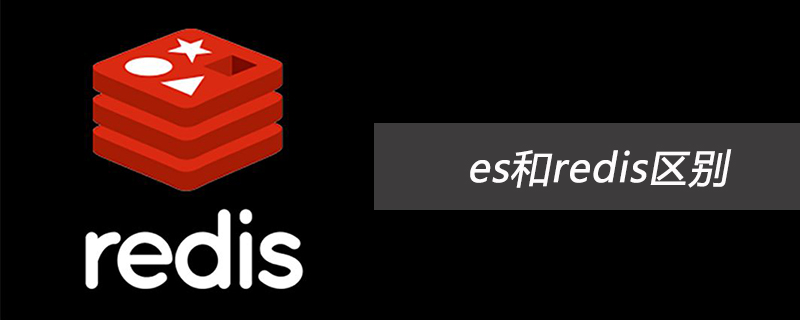This article brings you relevant knowledge about Redis, which mainly introduces the relevant content about traversal keys and database management. Let’s take a look at it together. I hope it will be helpful to everyone.

Recommended learning: Redis video tutorial
1 Traversing keys
##1.1 Full volume Traversing keys
Sometimes we need to fully traverse all keys, then we need to use the keys pattern command, and this command supports pattern matching127.0.0.1:6379> mset name luke neme josh OKIf you want To traverse all keys, you can use the command keys *
127.0.0.1:6379> keys * 1) "name" 2) "neme"pattern uses glob-style wildcards, where:
- * represents any character
- ? Represents a character
- [] represents matching part of the characters, for example [a,b] means matching two characters a and b, [1-10] means matching any number from 1 to 10
- \x means escaping. When you need to match the * character, you need to escape it.
127.0.0.1:6379> keys n[a,e]me 1) "name" 2) "neme"You can also operate like this
127.0.0.1:6379> keys n?me 1) "name" 2) "neme"But when there are a large number of keys in the redis database, keys will block redis. What should we do if we need to traverse keys? Generally our production environment is multi-node, then we can find a redis slave node that does not provide external services to traverse the data, but if the amount of data is large, it will still block redis, but for the slave node, it is just Affected master-slave replication. If you are sure that there are not many keys on redis, you can execute it directly.
1.2 Progressive traversal
Progressive traversal is to traverse part of the key each time, then return, and continue to traverse the subsequent data the next time. In this way, all data can be traversed without blocking the redis service.scan cursor [MATCH pattern] [COUNT count]The parameters are explained as follows:
- cursor is a required parameter. It is a cursor, indicating where the traversal has been. Next time, it will start from this cursor. , if 0 is returned, it means that the traversal is completed.
- MATCH pattern is an optional parameter, which is the same as the pattern of keys
- COUNT count indicates how many keys to traverse, the default is 10 , can be increased according to the actual situation
127.0.0.1:6379> mset a 1 b 1 c 1 d 1 e 1 f 1 g 1 h 1 i 1 g 1 k 1 l 1 m 1 n 1 o 1 p 1 q 1 r 1 s 1 t 1 u 1 v 1 w 1 x 1 y 1 z 1 OKWe use scan to traverse, the first execution returns the following:
127.0.0.1:6379> scan 0
1) "1"
2) 1) "l"
2) "f"
3) "k"
4) "y"
5) "c"
6) "e"
7) "w"
8) "d"
9) "b"
10) "o"
11) "q"The second time uses the 1 returned by the first time When traversing, you can traverse to 10 keys127.0.0.1:6379> scan 1
1) "23"
2) 1) "v"
2) "u"
3) "z"
4) "g"
5) "n"
6) "s"
7) "i"
8) "a"
9) "r"
10) "t"The third time you use the 23 returned for the second time to traverse. When the return is 0, it means that the traversal is completed127.0.0.1:6379> scan 23 1) "0" 2) 1) "x" 2) "h" 3) "m" 4) "p"At the same time, it also There are hscan for hash types, sscan for set types, and zscan for ordered sets. The usage methods are the same as scan2 Database managementThere are several other redis A command for database operations: dbsize, select, flushdb/flushall
2.1 Switch database, select
select dbIndexdbIndex is the corresponding database serial number , there are 16 databases in the default redis configuration, and you can switch to the database number you select. For example, set a key in the default database No. 0127.0.0.1:6379> set name luke OKThen we switch to database No. 1 to obtain the key, but it cannot be obtained, indicating that there are differences between databases in a redis service Not interoperable.
127.0.0.1:6379> select 1 OK 127.0.0.1:6379[1]> get name (nil)So can it be used as multiple redis? Of course not. Although there are more libraries, since redis is single-threaded, it is actually still a CPU. If a command in a database is executed very slowly, other libraries will also be affected. Therefore, in this case, if it is blocked by other libraries, For developers using a certain library, it can be difficult to analyze what the problem is.
2.2 flushall/flushdb
The difference between flushall and flushdb is that flushall will clear all data in all libraries, while flushdb will only clear the current database. This is easy to understand, so we won’t give examples. However, it should be noted that these two commands will clear all data, and the consequences of misoperation will be disastrous. And when there are too many keys, redis will also be blocked, so you must be careful when using these two commands. Recommended learning:The above is the detailed content of Detailed explanation of Redis key traversal and database management. For more information, please follow other related articles on the PHP Chinese website!
 es和redis区别Jul 06, 2019 pm 01:45 PM
es和redis区别Jul 06, 2019 pm 01:45 PMRedis是现在最热门的key-value数据库,Redis的最大特点是key-value存储所带来的简单和高性能;相较于MongoDB和Redis,晚一年发布的ES可能知名度要低一些,ES的特点是搜索,ES是围绕搜索设计的。
 一起来聊聊Redis有什么优势和特点May 16, 2022 pm 06:04 PM
一起来聊聊Redis有什么优势和特点May 16, 2022 pm 06:04 PM本篇文章给大家带来了关于redis的相关知识,其中主要介绍了关于redis的一些优势和特点,Redis 是一个开源的使用ANSI C语言编写、遵守 BSD 协议、支持网络、可基于内存、分布式存储数据库,下面一起来看一下,希望对大家有帮助。
 实例详解Redis Cluster集群收缩主从节点Apr 21, 2022 pm 06:23 PM
实例详解Redis Cluster集群收缩主从节点Apr 21, 2022 pm 06:23 PM本篇文章给大家带来了关于redis的相关知识,其中主要介绍了Redis Cluster集群收缩主从节点的相关问题,包括了Cluster集群收缩概念、将6390主节点从集群中收缩、验证数据迁移过程是否导致数据异常等,希望对大家有帮助。
 详细解析Redis中命令的原子性Jun 01, 2022 am 11:58 AM
详细解析Redis中命令的原子性Jun 01, 2022 am 11:58 AM本篇文章给大家带来了关于redis的相关知识,其中主要介绍了关于原子操作中命令原子性的相关问题,包括了处理并发的方案、编程模型、多IO线程以及单命令的相关内容,下面一起看一下,希望对大家有帮助。
 Redis实现排行榜及相同积分按时间排序功能的实现Aug 22, 2022 pm 05:51 PM
Redis实现排行榜及相同积分按时间排序功能的实现Aug 22, 2022 pm 05:51 PM本篇文章给大家带来了关于redis的相关知识,其中主要介绍了Redis实现排行榜及相同积分按时间排序,本文通过实例代码给大家介绍的非常详细,对大家的学习或工作具有一定的参考借鉴价值,希望对大家有帮助。
 实例详解Redis实现排行榜及相同积分按时间排序功能的实现Aug 26, 2022 pm 02:09 PM
实例详解Redis实现排行榜及相同积分按时间排序功能的实现Aug 26, 2022 pm 02:09 PM本篇文章给大家带来了关于redis的相关知识,其中主要介绍了Redis实现排行榜及相同积分按时间排序,本文通过实例代码给大家介绍的非常详细,下面一起来看一下,希望对大家有帮助。
 一文搞懂redis的bitmapApr 27, 2022 pm 07:48 PM
一文搞懂redis的bitmapApr 27, 2022 pm 07:48 PM本篇文章给大家带来了关于redis的相关知识,其中主要介绍了bitmap问题,Redis 为我们提供了位图这一数据结构,位图数据结构其实并不是一个全新的玩意,我们可以简单的认为就是个数组,只是里面的内容只能为0或1而已,希望对大家有帮助。
 一起聊聊Redis实现秒杀的问题May 27, 2022 am 11:40 AM
一起聊聊Redis实现秒杀的问题May 27, 2022 am 11:40 AM本篇文章给大家带来了关于redis的相关知识,其中主要介绍了关于实现秒杀的相关内容,包括了秒杀逻辑、存在的链接超时、超卖和库存遗留的问题,下面一起来看一下,希望对大家有帮助。


Hot AI Tools

Undresser.AI Undress
AI-powered app for creating realistic nude photos

AI Clothes Remover
Online AI tool for removing clothes from photos.

Undress AI Tool
Undress images for free

Clothoff.io
AI clothes remover

AI Hentai Generator
Generate AI Hentai for free.

Hot Article

Hot Tools

SublimeText3 Mac version
God-level code editing software (SublimeText3)

SAP NetWeaver Server Adapter for Eclipse
Integrate Eclipse with SAP NetWeaver application server.

Atom editor mac version download
The most popular open source editor

mPDF
mPDF is a PHP library that can generate PDF files from UTF-8 encoded HTML. The original author, Ian Back, wrote mPDF to output PDF files "on the fly" from his website and handle different languages. It is slower than original scripts like HTML2FPDF and produces larger files when using Unicode fonts, but supports CSS styles etc. and has a lot of enhancements. Supports almost all languages, including RTL (Arabic and Hebrew) and CJK (Chinese, Japanese and Korean). Supports nested block-level elements (such as P, DIV),

SecLists
SecLists is the ultimate security tester's companion. It is a collection of various types of lists that are frequently used during security assessments, all in one place. SecLists helps make security testing more efficient and productive by conveniently providing all the lists a security tester might need. List types include usernames, passwords, URLs, fuzzing payloads, sensitive data patterns, web shells, and more. The tester can simply pull this repository onto a new test machine and he will have access to every type of list he needs.







